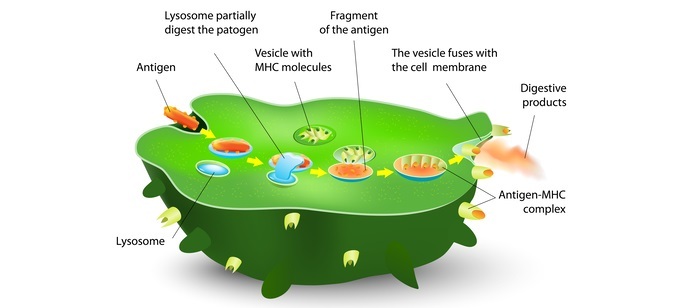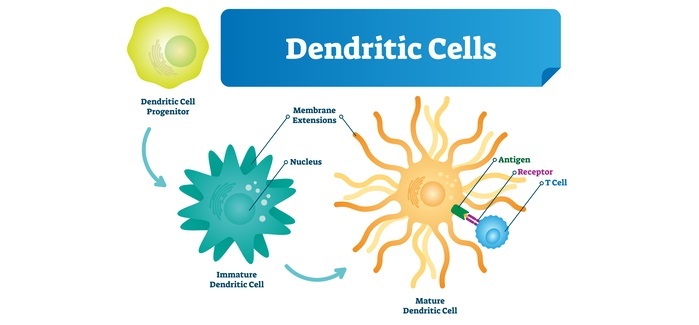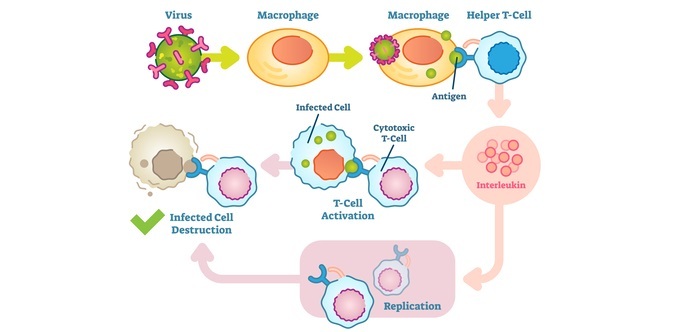
 Data Structure
Data Structure Networking
Networking RDBMS
RDBMS Operating System
Operating System Java
Java MS Excel
MS Excel iOS
iOS HTML
HTML CSS
CSS Android
Android Python
Python C Programming
C Programming C++
C++ C#
C# MongoDB
MongoDB MySQL
MySQL Javascript
Javascript PHP
PHP
- Selected Reading
- UPSC IAS Exams Notes
- Developer's Best Practices
- Questions and Answers
- Effective Resume Writing
- HR Interview Questions
- Computer Glossary
- Who is Who
Major Histocompatibility Complex and MHC Molecules
Introduction
The Major Histocompatibility Complex (MHC) is a group of genes located on chromosome 6 in humans that encode for MHC molecules. These molecules are essential for the immune system to identify and respond to foreign invaders such as viruses, bacteria, and other pathogens.
The MHC plays a crucial role in determining the compatibility of transplants and is also implicated in a wide range of diseases, including autoimmune disorders and cancer.
Below we shall explore the MHC in detail, discussing its structure, function, and importance in immunology.

Structure of MHC Molecules
The MHC is divided into two classes: class I and class II.
Class I MHC molecules are found on the surface of all nucleated cells,
while class II MHC molecules are found primarily on antigen-presenting cells such as dendritic cells, macrophages, and B cells.

Class I MHC molecules are composed of a transmembrane glycoprotein (? chain) and a small protein (?2-microglobulin). The ? chain is composed of three domains: an extracellular domain, a transmembrane domain, and a cytoplasmic domain. The extracellular domain is further divided into three subdomains: ?1, ?2, and ?3. The ?1 and ?2 domains form a peptide-binding cleft, which is where antigen peptides are bound. The ?3 domain interacts with the T-cell receptor (TCR) on cytotoxic T cells, which recognize and destroy infected cells.
Class II MHC molecules are composed of two transmembrane glycoproteins (? and ? chains), which are each composed of two domains: an extracellular domain and a transmembrane domain. The extracellular domains of both ? and ? chains form a peptide-binding cleft, which is where antigen peptides are bound. The extracellular domains of the ? and ? chains also interact with the TCR on helper T cells, which are responsible for activating other immune cells such as B cells.
Function of MHC Molecules
MHC molecules play a critical role in the immune system by presenting antigen peptides to T cells.
-
T cells are divided into two major subsets: cytotoxic T cells (also known as CD8+ T cells) and helper T cells (also known as CD4+ T cells).
Cytotoxic T cells recognize and destroy infected cells,
While helper T cells activate other immune cells and help coordinate the immune response.
Class I MHC molecules present antigen peptides to cytotoxic T cells, while class II MHC molecules present antigen peptides to helper T cells. The process of antigen presentation begins when an antigen-presenting cell engulfs a pathogen, breaks it down into antigen peptides, and loads these peptides onto MHC molecules. The MHC molecules then migrate to the cell surface, where they display the antigen peptides to T cells.

If a T cell recognizes an antigen peptide presented by MHC molecules, it will become activated and begin to proliferate, generating a large population of antigen-specific T cells. These T cells will then migrate to the site of infection, where they will destroy infected cells or activate other immune cells.
Importance of MHC Molecules
The MHC plays a critical role in determining the compatibility of transplants.
Transplant rejection occurs when the immune system recognizes the transplanted tissue as foreign and mounts an immune response against it.
The likelihood of transplant rejection can be reduced by matching the donor and recipient for MHC molecules.
The MHC is also implicated in a wide range of diseases, including autoimmune disorders and cancer.
Autoimmune disorders occur when the immune system mistakenly recognizes self-antigens as foreign and mounts an immune response against them.
-
Many autoimmune disorders are associated with specific MHC molecules, suggesting that genetic factors play a role in their development.
For example, the MHC class II molecule HLA-DR3 is associated with an increased risk of developing type 1 diabetes, while the MHC class II molecule HLA-B27 is associated with an increased risk of developing ankylosing spondylitis.
In addition to autoimmune disorders, MHC molecules are also implicated in cancer.
Tumor cells often express abnormal proteins on their surface, which can be recognized by the immune system as foreign.
However, tumors can evade the immune system by downregulating MHC molecules or presenting low levels of antigen peptides. This allows tumor cells to escape recognition and destruction by the immune system.
Research has shown that certain MHC molecules are associated with an increased or decreased risk of developing certain types of cancer. For example, the MHC class I molecule HLA-A2 is associated with a decreased risk of developing melanoma, while the MHC class II molecule HLA-DRB1*15:01 is associated with an increased risk of developing multiple sclerosis and certain types of cancer.
MHC Polymorphism
MHC polymorphism refers to the variation in MHC molecules within a population.
MHC genes are highly polymorphic, meaning that there are many different alleles (variants) of each MHC gene within a population.
This diversity is important for the immune system to recognize and respond to a wide range of pathogens. MHC polymorphism is also responsible for the compatibility and rejection of transplanted organs and tissues.

